Keynote Speakers
We are happy to announce our keynote speakers. There will be 20 plus keynote speakers spread out over the 3 days of the conference.
Click on the (+) symbol to read their keynote presentation abstract or their biography.
Marine, Aviation, and Ground Applications
Water, Air, Land Sustainability Issues in Mining and Metal Extraction
Featuring the Fathi Habashi Lecturer
Advanced Manufacturing and Materials VII

Adam Hopkin
CEO, Uniformity labs
Keynote Presentation: ABC's of Multimodal Powders: Applications, Benefits, and Characteristics
Historically, bimodal suspensions of metal particles have been used to produce parts via Metal Injection Molding and other particle-based processes, but with limited success in applications relative to the use of monomodal particle distributions. This has, in part, been due both to microscopic particle size non-uniformity in the bimodal materials and to difficulties in producing consistent viscosities batch to batch. Use of bimodal powders in powder-based processes was similarly limited, and such powders further can exhibit alloy and size-dependent rheological and particle de-mixing issues. Recently, however, high density multimodal (two or more modes) powders and suspensions have been deployed successfully and repeatably with key difficulities solved. Namely, metal powders with highly uniform, repeatable microscopic particle arrangements have been produced and deployed in many production applications in the additive manufacturing space. Such powders exhibit significant benefits over tpyical monomodal powders, including increased density of spread layers, advantageous rheology, highly uniform density across the powder bed, and others. These benefits result in much faster printing and more repeatable outcomes, and often in more uniform and lower porosity printed parts. Sintered parts further exhibit differentiated multimodal microstructures.
Biography
Adam is an entrepreneur and scientist focused on the commercialization of breakthrough technologies in the physical sciences and novel materials. He has led technical and business teams at several companies such as advanced technology startups, including as founder and CEO of Uniformity labs, an additive manufacturing materials, software, and printing company born out of IP conceived by himself and a co-founder. He is the author of many scientific, materials and manufacturing technical papers and patents, including on the topics of structural nucleation, granular media density enhancement, additive manufacturing print processes, thermoelectric design and production, phononic attenuation, and novel fundamental derivations such as for the Golden Ratio. He earned his Ph. D. in Theoretical Chemistry from Princeton, where he was awarded a Charlotte Elizabeth Proctor Honorific Fellowship and the Ray Grimm Memorial Prize in Computational Physics. Adam obtained his bachelor’s degree also at Princeton (cum laude) in Physics, with minors in Materials Science and Applied Mathematics.
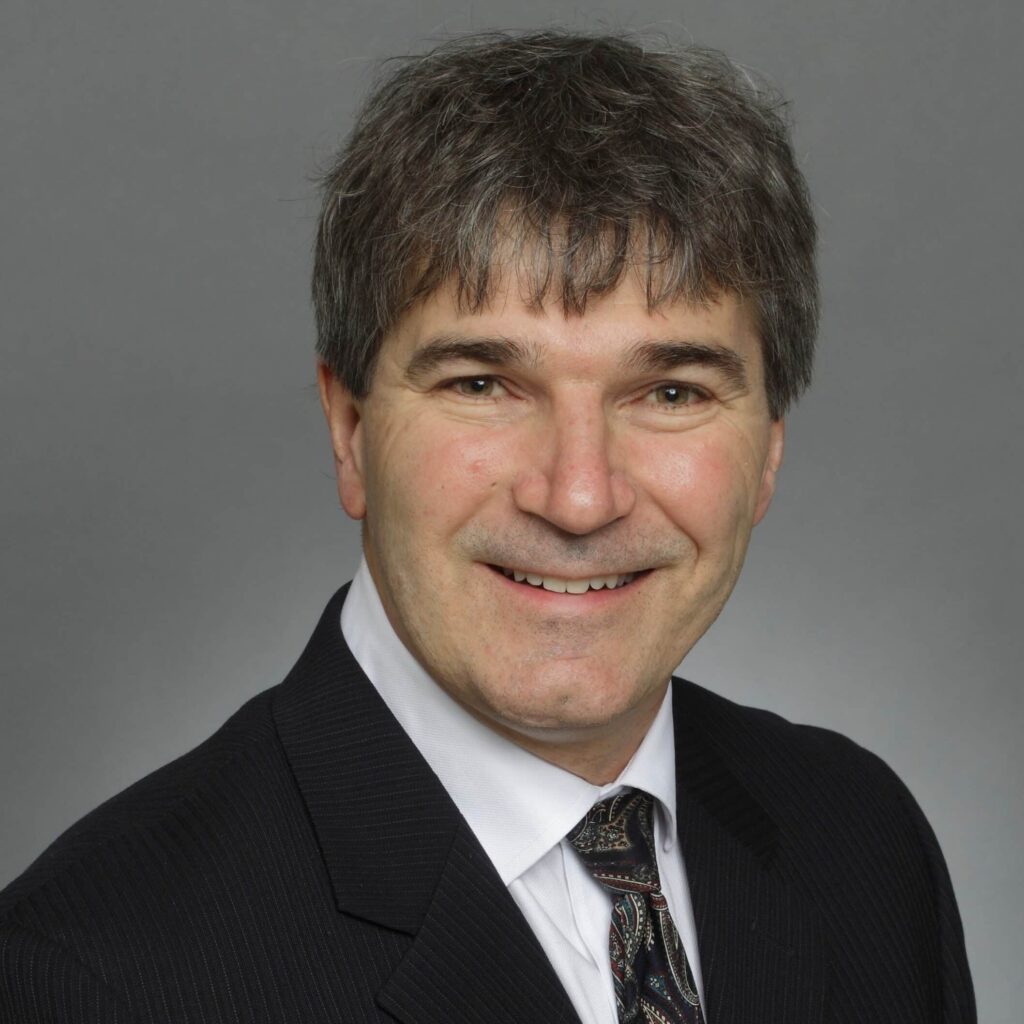
Mark Kozdras
Emeritus Scientist, Natural Resources Canada
Keynote Presentation: Accelerated Materials Discovery - Pathway to Energy Sustainability
The manufacturing sector has evolved considerably in the past because of globalization and the investment in digital technology through the Industry4.0 transition. Now, the sector is responding to two societal challenges, climate change and the criticality of raw materials. Climate change is driving investment in mitigation strategies that involve renewables, new carbon capture technologies and the development of new energy carriers like hydrogen and batteries. The automotive sector is one example of how quickly industry must adapt to the clean energy transition. Unfortunately, the geopolitical situation and the cost / availability factors for raw materials needed to achieve such a transition demand new approaches to source, refine and valorize these raw materials for novel product applications. In 2015, the United Nations convened global leaders in government and private sector to set a course to a decarbonized future and emphasized the need for radical technology development under the initiative Mission Innovation. The Clean Energy Materials Innovation Challenge, IC6, emerged as a cross-cutting materials technology development platform with the specific goal to accelerate the discovery, development and deployment of clean energy materials and devices. Thought leaders proposed a bold concept to achieve a ten-fold acceleration in materials development through Materials Acceleration Platforms, MAPs. These platforms would integrate material and device synthesis with characterization and testing in a closed loop, all of which would be accelerated through advanced technologies of artificial intelligence, smart automation/digitalization and high-performance simulation and modeling. The multidisciplinary approach has been referred to as autonomous or self-driving laboratories (SDLs). It was quickly realized that the criticality of raw materials constraints could be encoded into the experimental planning in MAPs which addresses the two global challenges facing society. Since 2018, Canada has played a significant role in building an international effort to realize accelerated materials discovery and contributed to developing a pathway to global energy sustainability. The drivers, process and status of accelerated materials discovery will be elaborated in this talk.
Biography
Mark S. Kozdras is a professional engineer and emeritus materials scientist at Natural Resources Canada. Kozdras received his PhD in Mechanical Engineering from the University of Waterloo, has 21 years experience in automotive heat exchanger research, development and production, as well as 11 years managing the automotive materials research program at NRCan. He is the Canadian co-lead of the Materials for Energy (M4E) Innovation Platform of Mission Innovation. Within this role, he promotes international collaboration in the deployment of Materials Acceleration Platforms (MAPs), autonomous or self-driving laboratories for clean energy materials, and supports several projects that integrate accelerated materials discovery concepts. Kozdras was a key contributor in the joint NRCan/NRC design/development activity for the new Materials Acceleration Demonstration Ecosystem (MADE) laboratory in Mississauga, ON, and is a principal investigator of the German-Canadian Materials Acceleration Centre (GC-MAC).

Daniel Paquet
Researcher, Hydro Quebec
Keynote Presentation: Hydro Quebec Efforts Toward an Integrated Computational Materials Engineering Framework for Hydraulic Turbine Engineering
Fatigue damage mechanisms in hydraulic turbine steels are complex and depend on their underlying microstructure. Unfortunately, the methodology used for designing today’s turbines does not consider micro-mechanisms responsible for their fatigue damage. To circumvent this limitation, ongoing efforts at Hydro Quebec aim to develop Integrated Computational Materials Engineering (ICME) tools for the future development of hydraulic turbine digital twins that incorporate microstructural effects. In the context of the company’s ageing assets and the need for increased production of clean energy, there is indeed a great need for better decision-making with respect to the fabrication, use, and repair of hydraulic turbines. This presentation showcases ongoing initiatives at Hydro Quebec toward the development of an ICME framework for hydraulic turbine engineering. These initiatives are related to: (i) the characterization of hydraulic turbine steels microstructures by 3D electron backscatter diffraction (3D-EBSD); (ii) the extraction of elastoplastic properties at the scale of their microstructure by micro-tensile and nanoindentation experiments; (iii) the development of Phase Field (PF) models for the prediction of hydraulic turbine cast and welded microstructures, and of Crystal Plasticity Finite Element Method (CPFEM) models for the prediction of micro-scale deformation; and (iv) the design of experiments for the validation of PF and CPFEM models.
Biography
Daniel Paquet is a researcher at Hydro Quebec Research Institute. He received his PhD in Mechanical Engineering from The Ohio State University, and his master’s and bachelor’s degrees from École Polytechnique de Montréal. He specializes in solid mechanics, nonlinear finite-element method (FEM), micromechanical and multiscale FEM, as well as in experimental analysis of thermomechanical behaviour of materials at the macro and micro scales. Dr. Paquet has over 12 years of experience in hydraulic turbine materials research at Hydro Quebec, as well as 10 years managing R&D projects in the field of micro-scale characterization and modelling of hydraulic turbine materials. His R&D initiatives aim at the development of experimental techniques and numerical tools for a better understanding of micro scale fatigue damage mechanisms in hydraulic turbine materials. This knowledge will be key to Hydro Quebec’s objective of improving overall efficiencies of its network and increasing clean energy production.
Arsenic/Minor Element Controls in Metallurgical Plants

Felipe Lagno
Dirrector of Innovation, CODELCO
Keynote Presentation: Arsenic Management at Codelco: a contribution to the mining sustainability
Codelco Chile is the world’s largest copper producer. The company is a significant contributor to Chile’s economy and the well-being of its inhabitants. Our corporation’s focus is on exploring, developing, and exploiting mining resources, processing them to produce refined copper and by-products, and marketing them to customers worldwide. Currently, our copper accounts for 7% of global production and 29% of national production. This includes our stake in Minera El Abra (49%) and Anglo American Sur (20%).
We operate seven mine sites, known as ‘divisions’: Chuquicamata, Ministro Hales, Radomiro Tomic, Gabriela Mistral, Salvador, Andina, El Teniente, and the Ventanas refinery. Our head office, located in Santiago, guides strategic planning and provides transversal services to work centers.
One of our primary challenges is to produce copper sustainably while minimizing our environmental and social impact. Our goal is to achieve a harmonious coexistence with the environment and facilitate the transition to renewable energy, electrification, and electromobility. These are the fundamental building blocks for the world we dream of and design for the future. Codelco is committed not only to the local and national development of Chile but to the world as a whole.
Copper ores from Codelco’s mines also contain arsenic, mainly in the form of minerals such as enargite and tennantite (Cu3AsS4 and Cu12As4S13 respectively) especially in mines located in the Northern District such as Chuquicamata and Ministro Hales Divisions, which account for 85% of the total arsenic mined annually by the company (approximately 40 to 50 thousand tons per year).
Beneficiation of high-arsenic ore requires several stages, including milling and ore flotation, to produce a copper concentrate. This concentrate can be treated in internal assets, such as roasting, smelters, and refineries, or shipped out to be refined in external custom smelters and refineries. As a result, arsenic will be distributed in various streams and wastes, such as tailings, slags, flue dust, and sulfuric acid plant effluents.
Codelco uses different methods to dispose of and treat arsenic. The majority of the arsenic is reported to be in the form of calcium arsenate/arsenite – which has limited long-term stability due to its thermodynamic tendency to transform into calcium carbonate – These techniques are only effective in extremely dry environments, such as the Atacama Desert in northern Chile. A small portion of the arsenic, specifically the smelter and roaster flue dust, is fixed using a unique atmospheric process implemented by EcoMetales Limited, a Codelco subsidiary, in Chile.
In this context, the company has established the 2022-2030 Arsenic Road Map to improve the disposal route, optimize operations, and ensure the stable disposal of this element using the best known and potential technological practices that are economically competitive.
Biography
Over 20 years’ experience in the extractive metallurgy of base metals, aqueous processing and waste water treatment. Most of the work has been in the extractive (hydro)metallurgy of copper with a unique blend of operational, research and project experience with appropriate exposure to copper concentrators, tailings and smelters.
Demonstrated ability to lead and manage multidisciplinary teams in high-stress situations. Strong ability to rise to challenges, with a willingness to undertake complex tasks and provide direction with a focus on safety and business sustainability.
Chemical Engineering, MEng in Extractive Metallurgy from Universidad de Chile and PhD in Extractive Metallurgy (2005) from McGill University (Canada).

Jean-Philippe Mai
President & CEO, DUNDEE SUSTAINABLE TECHNOLOGIES
Keynote Presentation: Aspects of Detailed Engineering of a Glasslock Vitrification Plant: Legacy arsenical dust stabilization at a world-class mining operation
Following the commissioning of its demonstration plant on-site at an operating copper smelter in Namibia, Dundee Sustainable Technologies (DST) collaborated with a world-class mining company to evaluate the feasibility of a commercial application of the GlassLock Process™ at an African gold mine for a cost-effective and permanent remediation solution regarding arsenic contamination.
This paper examines practical aspects of the detailed engineering phase and their implication in addition to technical scenarios for the design and implementation of the aforementioned vitrification plant at a scale of 1,000 tonnes of As treated / year. The study was carried out by DST and aimed to further define, optimize, and evaluate the technical and integrational parameters associated with the application of DST’s patented arsenic stabilization process on legacy flue dust material originating from the mining operation. This experience is a relevant reference for any mining or smelting operation dealing with arsenic disposal challenges.
A wide body of technical literature and data was generated on the project arsenic trioxide dust by DST. The critical starting point of the work was the detailed characterization of the project dust to assess the degree of heterogeneity of the source material for various sampling zones and guide the determination of the base case vitrification formulation. At this step, the GlassLock Process™ adaptability was demonstrated by successfully vitrifying samples ranging from 5 %wt to 75 %wt As by adjusting the ratio of the reagents used with minimal impact on the overall process.
Project stages are summarised and described from construction to commissioning to operation and closure. Descriptions of the process engineering involved – the heart of the GlassLock Process™ – to convert the dust into a stable, inert, and non-hazardous amorphous glass are also provided. The final product proposed in the scope of the study is a Na-based glass compliant with US-EPA1311 regulatory limits and similar in composition to glasses submitted to US-EPA Leaching Environmental Assessment Framework methods in other studies, for which positive results were obtained.
DST has provided detailed engineering-level on the diverse components, services, and equipment required to complete the design, build, installation, and operation of the plant, in line with the EPCM mandate, the performance expectations of the client and our long and positive relationship with the group.
Biography
Mr. Mai has been with Dundee Sustainable Technologies since 2013, offering novel metallurgical processes for the treatment of complex ores and contaminants from the mining industry. With over 15 years’ experience in the mining sector as a manager and executive in base and precious metals projects in Canada, Australia and South America. Mr. Mai brings strong business oriented, leadership, geochemical and processing skills, and has been a key player in the development and deployment of the DUNDEE Technologies’ novel processes.

David Kratochvil
CEO, BQE Water
Keynote Presentation: Selenium Management in Mining and Metallurgical Processing using Electro-reduction
Selenium is a ubiquitous trace element present in many mineral deposits across the commodity spectrum. Consequently, selenium is often present in mine water and metallurgical process streams. Recent advances in the understanding of selenium toxicology resulted in stringent new selenium regulations that include not only limits for water but also fish tissue to protect environment from long-term effects caused by selenium bioaccumulation. The first attempts at managing selenium in mining and metallurgical industry involved the application of biological selenium reduction systems which revealed several major shortcomings. Developed over the last decade as an alternative to biological treatment systems, the Selen-IX technology which involves the use of electro-reduction combined with ion exchange has been successfully applied at four project sites in the last three years. In addition, several test campaigns of direct electro-reduction were performed on waste brines from smelting and metallurgical processing plants. This paper presents results from existing Selen-IX treatment plants and direct electro-reduction test campaigns, and examines potential future developments and applications of this method of selenium management to reduce life cycle costs, eliminate long-term environmental liabilities, and promote circular economy.
Biography
David is a chemical engineer with over 25 years of experience in water management and treatment in the mining industry. David provides technical leadership and oversight for all major projects carried out by BQE Water, focusing on reducing risk adjusted life cycle cost of water. Over the past two decades David lead the implementation of cyanide recycling SART technology at mines in North and South America, and acted as the QP responsible for water treatment on two dozen projects, providing continuity from scoping level assessments through permitting, piloting, to implementation. David is a co-author on four water treatment patents including one for selenium.

Carlos Rebolledo
Director of R&D, Ecometales
Keynote Presentation: The EcoMetales contribution to the stabilization of arsenic contained in mining residues
During the last decades, the generation of waste has increased enormously as a result of the activities of the exploitation of resources, raising environmental concerns in communities around the world. To tackle this issue, the industry must find new ways to recycle and reduce the generation of waste towards the so-called circular economy. Since 2007 EcoMetales, a Chilean company subsidiary of Codelco, has been contributing to the field of value recovery and stabilization of deleterious elements from mining waste. The EcoMetales industrial site is located in Calama, close to the Chuquicamata smelter and the Ministro Hales Roaster Plant, both Codelco operations. Up to date, this plant, have processed more than 760 kton of flue dust, recovering 122 kton of copper. In 2013 a pioneering atmospheric scorodite industrial process was launched, which has stabilized close to 25 kton of arsenic to date.
EcoMetales has not only a focus on the industrial treatment of flue dust for both value recovery and arsenic stabilization but also on the development of new processes. On this premise, a full equipped metallurgical laboratory and pilot plant for assessing new technologies is on site. EcoMetales has been involved in several projects related to waste management and processing from concentrator and smelting operations which has given to the company a specialized expertise in the field of value recovery and dangerous elements stabilization from waste.
An overview of the company in the processing of metallurgical residues as well as a review of the different technologies developed for the mining sector is presented in this plenary conference.
Biography
Bio coming soon.
Corrosion and Environmental Degradation of Materials
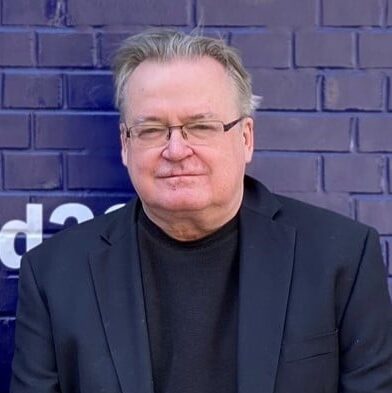
Roger Newman
University of Toronto
Keynote Presentation: Solid-Solution Alloying Effects in Aqueous and Molten-Salt Corrosion
Corrosion of metallic solid solutions is a very old topic, but new insights continue to be developed. There are two main strands in current practice – corrosion engineering, where we usually want to reduce the corrosion rate, and nanomaterials synthesis, where we exploit the peculiarities of the dealloying (selective electrolytic dissolution) process to make nanoporous metals. In either case, percolation theory provides a framework to guide our thinking. The most obvious percolation threshold, in a fcc alloy system is the ordinary fcc site percolation threshold: 20 at% of less-noble alloy component. However this is quite rare, though well-known in dezincification of brass. More elaborate forms of percolation argument are required to account for phenomena such as the “13 at%” of Cr required for passivity of stainless steel, or the prevalence of dealloying thresholds in the 50-60 at% range for dealloying of binary noble-metal alloys. Atomic surface mobility plays an important role in setting some of these thresholds, and at sufficiently high temperature (as in molten-salt dealloying) can strongly modify the purely geometric expectations from percolation.
Biography
Roger Newman has more than 40 years of experience in corrosion science since receiving his PhD from the University of Cambridge. First he worked for a few years at Brookhaven National Laboratory in the US, then he joined the Corrosion and Protection Centre at the former UMIST (University of Manchester Institute of Science and Technology). In 2004 he moved to the University of Toronto, where he is UNENE Research Chair in Nuclear Engineering.
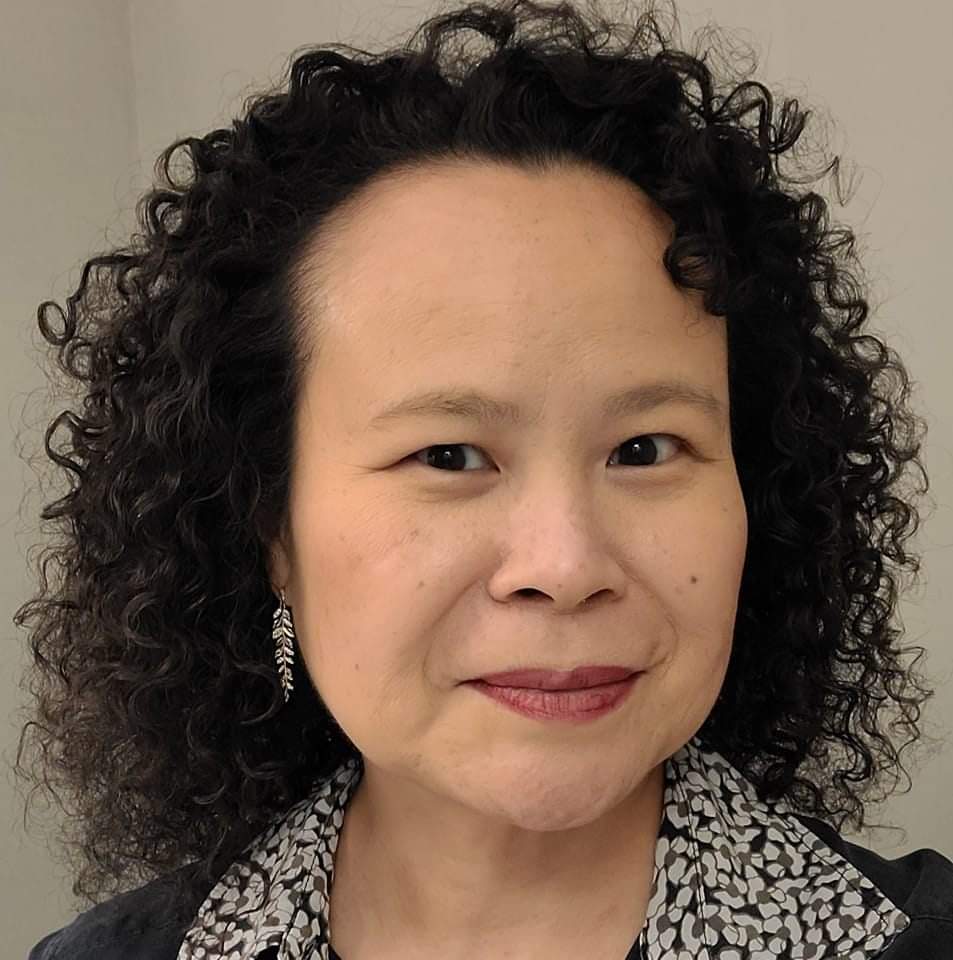
Amy Hsiao
University of Prince Edward Island
Keynote Presentation: Benchmarking, Lab-Scale Testing, and Generative AI in Materials Science for a Sustainable Future
The Materials Testing and Integrity for Sustainable Systems and Environment (MaTISSE) Lab at the Faculty of Sustainable Design Engineering at the University of Prince Edward Island is an interdisciplinary materials design, characterization, and processing research initiative. We investigate novel materials for sustainable applications, including renewable energy systems, life cycle assessment, corrosion, materials degradation, and asset management in harsh environments. The presentation will explore the synergy between these three approaches – benchmarking, lab-scale testing, and generative AI – illustrating how their integration fosters a holistic approach to sustainable materials development. The keynote will conclude by proposing a vision for the future, where the materials paradigm become integral components of a circular economy and scientists and engineers espouse a sustainability mindset in approach R&D.
Biography
BS, MIT, Materials Science and Engineering
MSC and PhD, Carnegie Mellon University, Materials Science and Engineering
Chateaubriand Postdoctoral Fellow, ENS-Saclay (Cachan)
MBA, Memorial University of Newfoundland
Dr. Amy Hsiao is a Professor at the Faculty of Sustainable Design Engineering at the University of Prince Edward Island. She leads applied research where Materials Science and Engineering contributes to innovations in Sustainability, specifically for renewable energy, advanced and additive manufacturing, the circular economy, and biomedical-materials advances. She welcomes industrial collaborations related to accelerated corrosion testing, the engineering of novel coatings, and the characterization and selection of materials and optimization of material processes for various environments. Also, Dr. Hsiao’s depth of scholarly service focuses on engineering education, engineering leadership, and the development of a sustainability mindset in engineering graduates and in the engineering workplace.

Laurent Béland
Queen’s University
Keynote Presentation: Atomistic computer simulations: what can they (and what can’t they) tell us about materials degradation?
In this presentation, I will describe recent developments in material modeling at the atomic scale. The work encompasses a variety of numerical simulation techniques, including electronic density functional theory (DFT), machine-learning interatomic potentials (MLIP), molecular dynamics (MD), and kinetic Monte Carlo (kMC) simulations.
Focusing on DFT and MLIP, I’ll demonstrate how advancements in machine learning have enabled us to accurately predict thermo-mechanical properties of complex alloys, specifically Zr(Nb,Fe)2 Laves phase alloys and Zr hydrides, as well as the fluid and thermal properties of molten salts. Additionally, the application of DFT-MD in studying the degradation mechanisms in steel exposed to high CO environments will be discussed.
Afterwards, I will present our work with MD and kMC simulations focusing on transport phenomena in Ni-Fe and Ni-Cr-Al alloys, explaining irradiation-induced order-disorder transitions and providing insights into the ‘third-element effect’ in Ni-Cr-Al.
To conclude, I will discuss the current limitations of atom-scale simulations in the context of materials degradation and propose pathways for future developments. Emphasis will be placed on the importance of integrating computational findings with experimental data to advance our understanding in this field.
In this presentation, I will describe recent developments in material modeling at the atomic scale. The work encompasses a variety of numerical simulation techniques, including electronic density functional theory (DFT), machine-learning interatomic potentials (MLIP), molecular dynamics (MD), and kinetic Monte Carlo (kMC) simulations.
Focusing on DFT and MLIP, I’ll demonstrate how advancements in machine learning have enabled us to accurately predict thermo-mechanical properties of complex alloys, specifically Zr(Nb,Fe)2 Laves phase alloys and Zr hydrides, as well as the fluid and thermal properties of molten salts. Additionally, the application of DFT-MD in studying the degradation mechanisms in steel exposed to high CO environments will be discussed.
Afterwards, I will present our work with MD and kMC simulations focusing on transport phenomena in Ni-Fe and Ni-Cr-Al alloys, explaining irradiation-induced order-disorder transitions and providing insights into the ‘third-element effect’ in Ni-Cr-Al.
To conclude, I will discuss the current limitations of atom-scale simulations in the context of materials degradation and propose pathways for future developments. Emphasis will be placed on the importance of integrating computational findings with experimental data to advance our understanding in this field.
Biography
LK Béland is an associate professor of mechanical and materials engineering at Queen’s University, Canada. He focuses on computational materials science, leading a multi-scale modelling research program connecting electronic structure, atomistic models, and mesoscale models. His areas of interest include materials for energy applications—with a strong focus on nuclear energy—construction materials, semi-conductors, and computational methods development. He has authored or co-authored over 80 peer-reviewed scientific articles. Before joining Queen’s in 2018, he obtained a PhD physics from Université de Montréal, and completed postdoctoral fellowships at the Oak Ridge National Laboratory and MIT.
Electrometallurgy for a Net Zero Economy
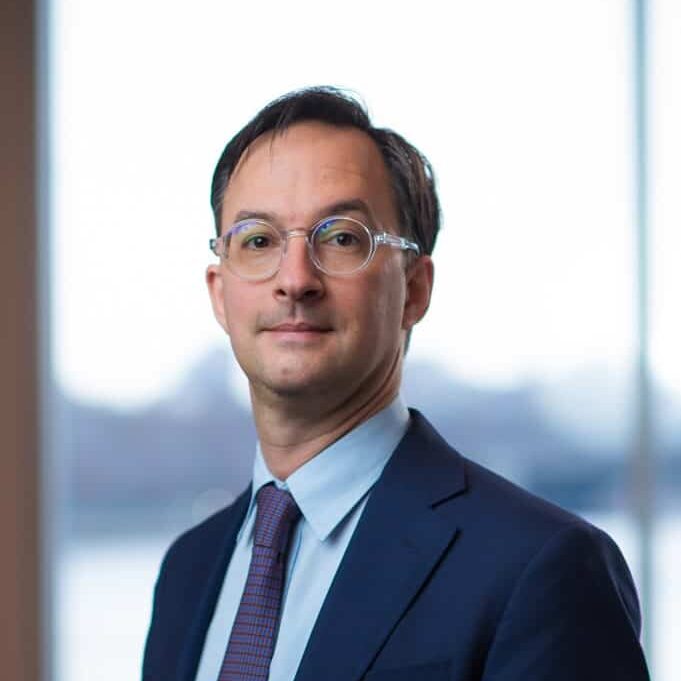
Antoine Allanore
Professor of Metallurgy, Massachusetts Institute of Technology
Keynote Presentation: Electrochemical Engineering for Iron Production by Electrolysis
The electrolytic production of iron, powered by low GHG electricity, is the most direct route to mitigate greenhouse gas emissions for iron and steelmaking. Yet, electrolytic production of iron has remained a frontier in electrometallurgy, limited to powder production in acidic aqueous electrolytes, products that are marginal as compared to steel production. Instead, innovative and somehow unconventional settings are needed in order to integrate iron electrowinning in the supply of C-free iron for steel production.
In this course, the fundamentals and engineering frontiers related to electrolytic production of iron from iron oxides will be presented, using two ongoing technologies, alkaline iron electrowinning and molten oxide electrolysis as supporting examples.
Biography
Antoine Allanore is a Professor of Metallurgy in the Department of Materials Science and Engineering, currently recipient of the Heather N. Lechtman Chair. Professor Allanore received his higher education in Nancy (France) where he earned a chemical process engineer diploma from Ecole Nationale Supérieure des Industries Chimiques and a M.Sc. and a Ph.D. from Lorraine University. He joined the Massachusetts Institute of Technology in 2010 as a post-doctoral with Professor Sadoway, after several years of service as research engineer for ArcelorMittal (Ulcos project with Jean-Pierre Birat). In 2012, he was appointed the T.B. King Assistant Professor of Metallurgy in the Department of Materials Science and Engineering at MIT. He teaches thermodynamics and sustainable chemical metallurgy at both the undergraduate and graduate level. His research has led to several new process technologies that are currently under deployment either at MIT or around the world, including for the production of iron and steel by electrolysis without GHG emissions. He has been organizer of several TMS symposia dedicated to materials processing since 2012, and was a member of the editorial board of Metallurgical and Materials Transactions B between 2017 and 2023. He is the current Director of the Center for Materials Research in Archaeology and Ethnology (CMRAE) at MIT.
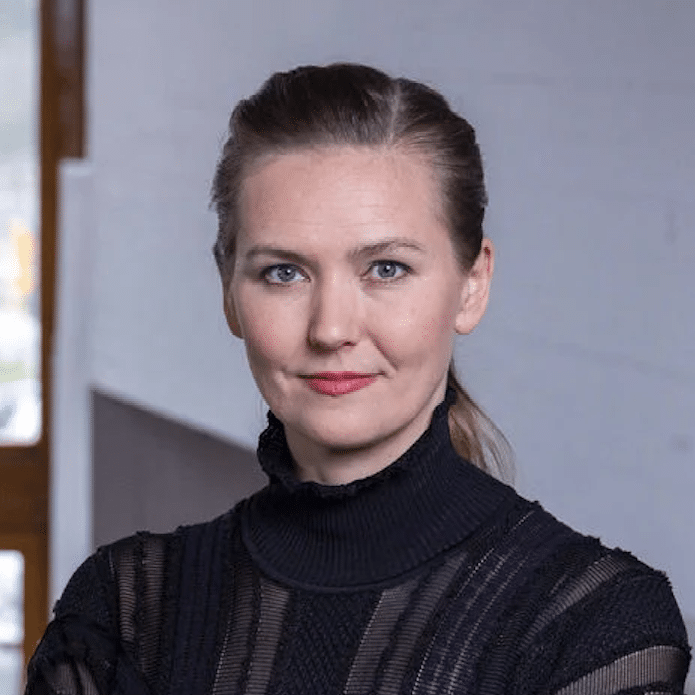
Mari Lundström
Chair of Hydrometallurgy and Corrosion, Aalto University
Keynote Presentation: Towards Carbon Neutral Metals - Electrochemical processing and advancement
World is driving towards decarbonization and non-fossil and renewable energy. This transition is highly metal intensive, e.g. EV batteries, permanent magnets and solar cells relying a lot on mineral resources and use of refined high purity metals. At the same time, mineral processing and metals industry still have substantial carbon footprint, which also need to be mitigated to make the value chain from minerals to renewable energy more sustainable. Here, metallurgical industry will in a near future address the issues of decarbonization e.g. via the use of renewable or green reductants, hydrogen, renewable energy, electrochemical processes instead of carbon intensive chemicals, and via improvements in processes and their efficiencies. Process development, innovations as well as digitalization will also enhance the decarbonization.
Finland-based Tocanem research ecosystem (Toward Carbon Neutral Metals) aims to achieve carbon-neutral metals production in Finland and establish global leadership in process innovations related to carbon-neutral metals production, both with focus on CO2-lean and -free processes as well as means to improve the energy and material efficiency. Here, electrochemical processes and knowhow play a big role in e.g the following metallurgical processes; pickling, electrowinning, electrorefining, as well as in their novel innovations and advancements. Further, the use of electrochemical processes in hydrogen production (water splitting) or specific chemicals production or water purification processes will increase.
Electrochemical cell is a schematic that can be used to describe the fundamental principles of electrochemical reactions and systems, weather spontaneous or not. In the case of spontaneous reactions the cell can be called e.g. galvanic or corrosion cell, whereas in the case of non-spontaneous reactions the term electrolytic cell is commonly used. In electrolytic cell, external power source (current or potential source) is used to get the desired reactions to proceed. In general, electrochemical cells consist of four components; anode, cathode, solution and conductor. In the case of spontaneous reactions driven by chemical energy (e.g. corrosion, leaching or cementation) anode and cathode refers more to anodic and cathodic reactions rather than to physically added electrodes in the system whereas in the case of electrolytic cells (e.g. pickling, electrorefining or electrowinning) specific electrodes i.e. anode and cathode are used.
The current work focus on the role of anodic and cathodic reaction in metals refining. It presents cases of recent advancements in industrial electrochemistry, with focus on improvements in the operation of electrolytic cells. Alternating anodic and cathodic polarization as well as their industrial advancements will be in the focus, demonstrated by advanced pickling as well as other metal refining processes. This can lead into increasing current efficiency of processes but also on totally novel ways of operating in metal refining.
Biography
Professor Mari Lundström has joined the faculty at Aalto University in 2015, after working several years in industry after her graduation. She held several positions in Outotec including leading projects as a senior metallurgist. Lundström is a highly qualified professional in Metallurgy, focusing specifically on hydrometallurgy i.e., metals behavior, production, and recycling via aqueous solutions. Also applied electrochemistry, corrosion and process modelling as well as related life cycle analysis are in the focus of her research group. Her research portfolio is exceptionally wide, with over 30 funded projects supported by different funding segments. During the last years, 15 Doctors of Science (Technology) have graduated under her supervision. In the scope of her recent promotion as Vice Dean Research and Innovation, Lundström says that she wants to promote high quality research that truly can have an impact on the big challenges of today. Climate crisis goes hand in hand with “molecular crisis”, as e.g., energy transition is increasingly raw material intensive. This highlights the increased importance of research in energy materials and storing, but furthermore the need for increased understanding on raw material dependency, their production, limitations, and recyclability’, says Lundström.

Boyd Davis
Kingston Process Metallurgy Inc.
Keynote Presentation: Impact of operating conditions on Al-Sc master alloy production through electrolysis
Small additions of Sc to aluminum allow for significant increases in the strength of near-pure aluminum alloys without impacting the electrical conductivity, making them of great interest for electrical and power-transfer applications. However, to achieve industrial production of these alloys, economical high content and high purity Sc-Al master alloys must be produced for use in casthouses.
Current industrial practice is to use calciothermic reduction of scandium fluoride to produce primary scandium metal, and then dissolve it in high purity aluminum, which is both inefficient and costly. In contrast, direct electrolysis of scandium oxide into aluminum produces an Al-Sc master alloy directly, adding (Sc2O3) to a molten fluoride salt similarly to the primary production of aluminum in a Hall-Heroult cell type. This process allows for production of Al-Sc alloy in a single step with little modification of conventional aluminum smelters.
In order to optimize the resulting aluminum scandium master alloy, this paper presents experimental work done to better understand the relationship between the electrolysis parameters and the final distribution of Sc in the Al-Sc alloy, and how these factors impact its application when alloying primary aluminum.
Biography
Boyd Davis is a chemical process metallurgist and principal with Kingston Process Metallurgy, an integrated chemical process development company based in Kingston Ontario. Aside from his work at KPM, he has volunteered his time for over 20 years as an adjunct and has supervised over a dozen graduate theses and many more undergraduate students. He has served on granting committees and was a theme coordinator of two major academic networks, H2CAN and AUTO21. This experience has given a well rounded view of the interactions between academia, government, and industry in metallurgy.
Extractive Metallurgy from Conception to Operation: Experimentation, Simulation, Pilot and Ramp-up

Boyd Davis
Principal, Kingston Process Metallurgy Inc.
Keynote Presentation: The ghosts of pyrometallurgy past, present, and future – Channeling Cratchit in a Scrooge world
Pyrometallurgy is difficult and made harder by the decline in related teaching over the past decades. An overview of what we had, where we are, and where we are going can give clarity to the steps needed to reverse the decline. Industry, service providers, academics, and government have all had a role in this loss of expertise. Actions are offered for a different outcome than that revealed by the ghost of pyro future.
Biography
Boyd Davis is a chemical process metallurgist and principal with Kingston Process Metallurgy, an integrated chemical process development company based in Kingston Ontario. Aside from his work at KPM, he has volunteered his time for over 20 years as an adjunct and has supervised over a dozen graduate theses and many more undergraduate students. He has served on granting committees and was a theme coordinator of two major academic networks, H2CAN and AUTO21. This experience has given a well rounded view of the interactions between academia, government, and industry in metallurgy.

Chuanyu Jiang
Kolaka Nickel Indonesia
Keynote Presentation: Indonesia replaces Canada as the Ni giant for the 21st century - Developments and Future Prospects
In the last two decades or so, world nickel usage has steadily increased due to demands for stainless steel, other non-ferrous alloys, plating, casting and especially batteries, with the latter projected to have an annual compound growth rate of about 8% over the period 2015-2040. The fifth most abundant element in the world, nickel is found in nature as sulphides and in oxidic form as nickel laterite. About 70% of current world primary nickel production is from laterites, with Indonesia producing about 43% of world primary nickel, all from processing nickel laterite ores. This is the ranking Canada held in 1970, having dominated world mined nickel for over 70 years, peaking at over 80% of world nickel in the period 1920s to 1940s. According to the US Geological Survey, Indonesia and Australia are the two top countries having the largest reserves of nickel, each country holding about 20% of known world nickel reserves. In Indonesia, nickel is currently produced by both pyrometallurgy, based on the rotary kiln-electric furnace process (for treating saprolite ore) and hydrometallurgy, typically the high-pressure acid leach process (treating limonitic ore). With coal supplying about 60% of the nation’s power, there has been a trend to process more limonitic ore hydrometallurgically, thus lowering the electrical power required. The keynote presentation is to present current Nickel production in the world, with review of Nickel industry in the past and also outlook the future. It provides an high level overview of Indonesian nickel production, its industrial development, optimum process technologies, the supply chain and sustainability with regard to reaching net zero emissions. The presentation will also feature an introduction delivered by Dr Phillip Mackey giving his perspective on Canada’s longstanding importance in primary nickel supply.
Biography
Chuanyu Jiang (Colin) is an expert in non-ferrous extractive metallurgy, with over 40 years of experience in engineering, design, and project management, currently working for Kolaka Nickel Indonesia. He completed his B.Eng. in Non-Ferrous Metallurgy from Northeast University (Shenyang, China) in 1983 and his M.Eng. in Metallurgical Engineering from McGill University in 2001. He has had leading roles in numerous projects, including the Daye Cu Noranda Reactor project, the Zijin Cu, YT Cu and YCC Cu projects, as well as the Jinchuan Ni, Jilin Ni, Zhuzhou Zn, Nonfemet Zn, CYMG Huize Zn, HLBR Zn projects.
IBS 2024 – The 25th International Biohydrometallurgy Symposium
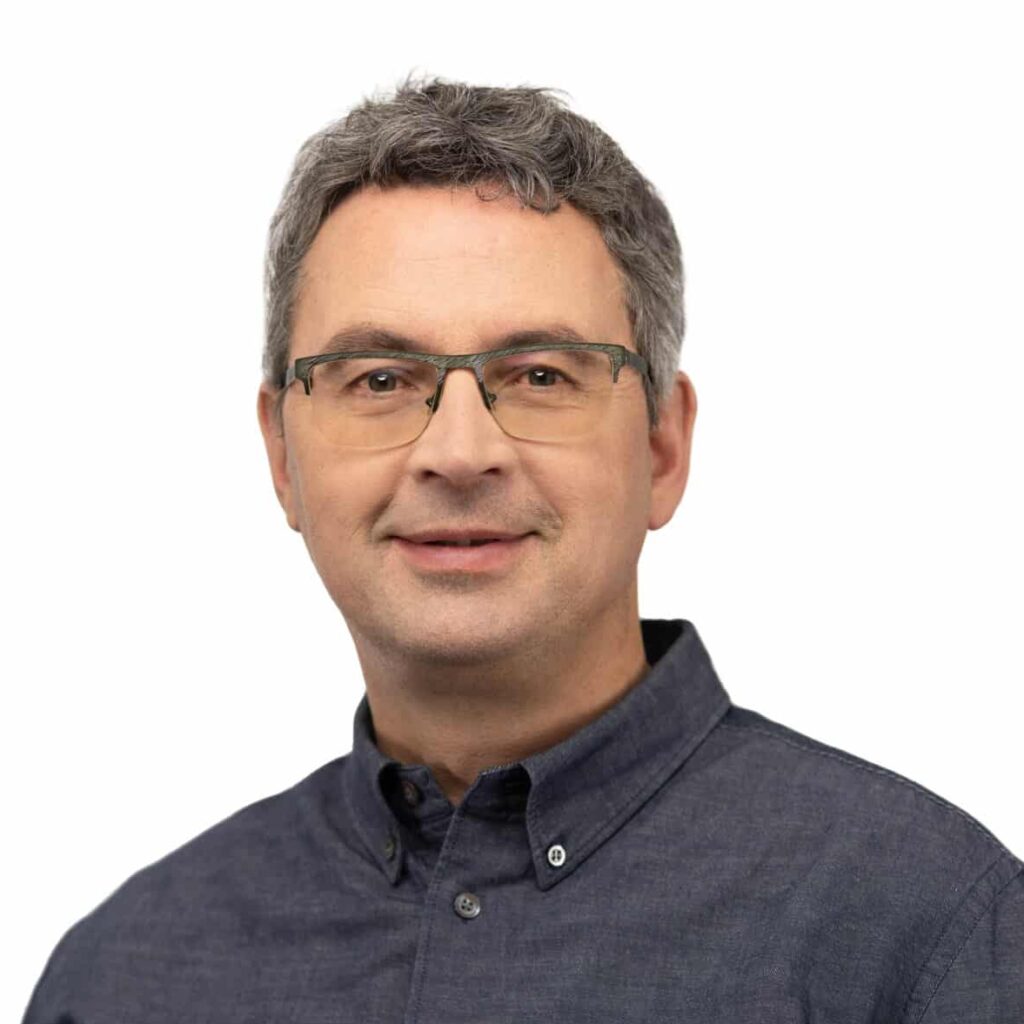
Axel Schippers
Head of Research Group, Bundesanstalt für Geowissenschaften und Rohstoffe
Keynote Presentation: Biohydrometallurgy for Cobalt and Nickel recovery from laterites: project BioProLat
Laterite ore deposits in Brazil and other tropical countries contain approximately 70 % of the world’s Ni and Co resources. High energy and/or reagent costs, accompanied by expensive equipment costs, are generally incurred when recovering Ni and Co via pyrometallurgy or high pressure acid leaching. Several acidophilic bacteria are able to use elemental sulfur as electron donor and couple the oxidation of sulfur to the reduction of molecular oxygen and/or ferric iron, and are thereby generating sulfuric acid and dissolving distinct Ni- and Co-bearing mineral phases partly via chemical reduction, e.g. Mn-oxides. Reductive bioleaching of laterites with acidophiles has been described for anaerobic as well as aerobic conditions. Stirred-tank bioreactor and percolation column laboratory experiments were carried out in the BioProLat project to test various samples from three different laterite deposits in Brazil and to optimize parameters including pH, temperature, aeration, and finding the most suitable bacterial consortium for the bioleaching of Ni and Co. Stirred-tank laterite bioleaching experiments starting at pH 1.5 under aerobic conditions with a consortium of different Acidithiobacillus thiooxidans strains resulted after 15 days in maximal extraction of 83 % Co and 83 % Ni, for 10 % (w/v) pulp density of a laterite sample. Column bioleaching with another laterite sample achieved 95 % Co and 66 % Ni extraction after one month. Eventually, the optimized process will be upscaled, transforming unexploited laterite ores and limonite stockpiles into valuable resources.
Biography
Axel Schippers studied biology at the University of Hamburg, Germany, and received his doctor‘s degree in 1998 for a thesis on the sulfur chemistry of microbial metal sulfide oxidation. Afterwards he worked for almost two years as post-doc on sediment microbiology and biogeochemistry in the Max-Planck-Institute for Marine Microbiology in Bremen, Germany. In 2001 he moved to the Federal Institute for Geosciences and Natural Resources (BGR) in Hannover, Germany. Since 2007 he heads the Geomicrobiology unit. In 2006 he qualified as lecturer (Privatdozent) for microbiology and geochemistry at the Leibniz University of Hannover and was appointed as Professor (apl.) in 2011.

Anna Kaksonen
Commonwealth Scientific and Industrial Research Organisation
Keynote Presentation: Biomining of critical minerals from ores and wastes: progress and prospects
Biomining utilises the activity of microorganisms to extract (i.e., bioleach) and recover (e.g., bioprecipitate or biosorb) metals from metal-bearing materials. Bioleaching has been utilised for decades at an industrial scale to extract base metals from sulfidic ores. Similarly, biooxidation has been used to pre-treat refractory sulfidic gold ores and solubilise the sulfide matrix before cyanidation. There is also increasing interest in applying biomining to extract and recover value from various mining and metallurgical wastes (e.g., slags, tailing, sludges, and ashes) and post-consumer wastes (e.g., batteries, printed circuit boards, magnets, and light phosphors).
Critical minerals are metallic or non-metallic elements essential for the functioning of our economy, modern technologies, or national security, and there is a risk that their supply chains could be disrupted. Critical minerals are used for manufacturing advanced technologies, such as banknotes, computers, mobile phones, fibre-optic cables, and semiconductors, as well as for applications in aerospace, defence, and medicine. They play a crucial role in low-emission technologies, including electric vehicles, wind turbines, solar panels, and rechargeable batteries, and some are essential for common products, such as electronics and stainless steel. The list of critical minerals varies across countries, but typical examples include high-purity alumina, antimony, beryllium, bismuth, chromium, cobalt, gallium, germanium, hafnium, indium, lithium, niobium, platinum group metals, rare earth elements, rhenium, scandium, tantalum, titanium, tungsten, vanadium, and zirconium.
Biomining applications to extract specific critical minerals from ores and wastes and meet growing demands are currently being explored. Biomining is especially attractive for low-grade and complex ores and wastes, which may not be economically feasible to process through traditional metallurgical pathways and using feedstocks containing penalty elements, such as arsenic. Biomining is typically carried out at ambient pressures and relatively low temperatures, providing opportunities to reduce the energy consumption and the carbon footprint of processing ores and wastes, relative to hydrometallurgical pressure leaching and pyrometallurgical operations. Moreover, biomining can reduce the consumption of chemical reagents, further reducing operating costs and potential environmental impacts. In addition, biomining also has the potential to reduce the passivation of some minerals, thus improving value extraction and recovery. This presentation gives an overview of biomining mechanisms and microbes that can be used to extract and recover critical minerals, and engineering approaches (such as bioreactors, vats, heaps, and in situ leaching) for implementing microbial catalysts. Examples are given for some industrial scale biomining operations targeting critical minerals across the globe. Recent developments in the field and future research targets are also highlighted.
Biography
Bio coming soon.

Corale Brierley
Fundacion Ciencia y Vida
Keynote Presentation: Evolution and Milestones: Nearly 50 Years of International Biohydrometallurgy Symposia (IBS)
The International Biohydrometallurgy Symposium (IBS) is a global conference series on biohydrometallurgy and related subjects. The first IBS (not so entitled) was held in Braunschweig, Germany in 1977. Subsequently, it has convened biannually in multiple countries in six continents.
Here, we provide a concise overview of the nearly 50-year history of the IBS, tracing the evolution and impact of this pivotal platform for the convergence of science and engineering in the interdisciplinary field of biohydrometallurgy. Originating in the nascent stages, these symposia have grown into globally recognized events, serving as catalysts for collaboration, knowledge dissemination, and the advancement of sustainable metal extraction processes from bench scale through commercial scale.
We explore the role of the IBS in historical progression in fostering international collaboration and knowledge exchange. Case studies from various IBS symposia highlight tangible contributions to the mining and metallurgical industries together with ancillary advances in fundamental geobiological insights. We showcase advancements in environmentally friendly metal extraction of base and precious metals, uranium, and rare earth elements as well as process life cycles. IBS presentations have promoted metal recovery from e-waste and other waste materials. Scientific and technological breakthroughs resulting from these symposia, such as innovative expansions of bioleaching practices and powerful new genomic explorations, are discussed to illustrate the symposia’s profound impact on the field.
In addition, we address the IBS responses to contemporary challenges, including sustainability in mining and mineral processing practices. By integrating cutting-edge molecular biology tools into biohydrometallurgical research, the symposia have played pivotal roles in addressing these scientific challenges. The retrospective concludes by emphasizing the symposia’s enduring influence, aiming to inspire future generations to continue the legacy of innovation in biohydrometallurgy.
In essence, this condensed retrospective encapsulates the transformative journey of the International Biohydrometallurgy Symposia, highlighting their crucial role in shaping the trajectory of biohydrometallurgy, fostering global collaborations, and driving innovation in sustainable mineral processing methodologies since the 1970’s.
Biography
Dr. Corale L. Brierley provides technical consultation to the mining sector offering expertise in minerals bioleaching. She is well published and internationally recognized from a long consulting career; ~2 years with Newmont Mining Corporation; 8 years managing Advanced Minerals Technology Inc., a metal’s biotechnology company; and 10 years of applied R&D at New Mexico Institute of Mining and Technology (NMT). She is a member of the Society of Mining Engineers and was inducted in 1999 as a member of the U.S. National Academy of Engineering (NAE), serving 5 years on the NAE Council and 8 years as NAE Vice-President. She is currently Senior Advisor to the NAE President. Dr. Brierley’s awards include: NMT’s 1999 Alumni Association Distinguished Achievement Award; AIME’s 2008 James Douglas Gold Medal; SME’s 2011 Milton E. Wadsworth Award; American Mining Hall of Fame’s 2014 Medal of Merit (with co-recipient James Brierley); NMT’s 2018 President’s Medal; and The Minerals, Metals & Materials Society’s 2023 Distinguished Lecturer Award. Dr. Brierley has a Ph.D. in Environmental Sciences from the University of Texas (Dallas), a M.S. degree in Chemistry and a B.S. degree in Biology, the latter two degrees from New Mexico Institute of Mining and Technology.
Joe Ferron Memorial Symposium – Processing of Critical Materials
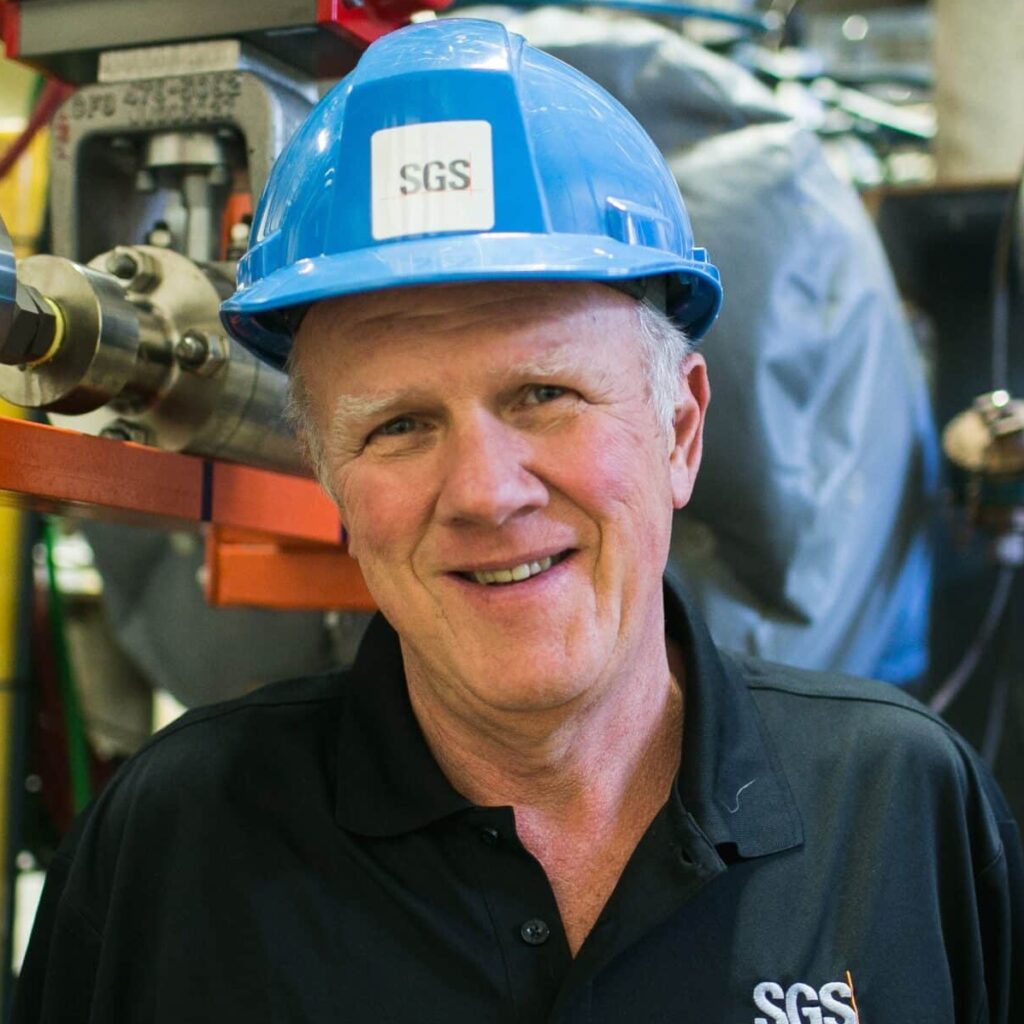
Chris Fleming
Senior Metallurgical Consultant, SGS
Keynote Presentation: Technology Development and Technology Transfer: Lessons Learned
The author will briefly discuss six new technologies he has been involved with at the development stage, four of which have advanced to successful, full-scale operating plants while two remain “on the shelf”. He will draw on his experiences with these processes and their development to highlight factors that are important for new technology development and the reasons why some processes advance rapidly to successful commercial operations while others may languish indefinitely on the drawing board.
Biography
Chris Fleming has a Ph.D. in chemistry from the University of Cape Town in South Africa and has spent much of his 40-year career in research and research management. He has authored or co-authored 80 technical publications, been awarded 14 patents, and contributed to several technical books on various aspects of extractive metallurgy.
He emigrated with his family to Canada in 1990 to join Lakefield Research and has been intimately associated with the 10-fold growth in that company over the last 15 years. He became General Manager in 1992 and Vice President and Chief Operating Officer when the company was privatized in 1995, through a management buyout from Lakefield’s former owners, Falconbridge Ltd. Lakefield Research grew rapidly over the next six years as a private company, as new laboratory businesses were established in Chile, Brazil, South Africa and Australia, and this led to the acquisition of Lakefield Research by SGS in 2002. Chris took on the role of Vice President of Global Metallurgy under SGS, with technical responsibility for SGS Minerals’ worldwide metallurgy and mineralogy businesses. Chris has recently retired from SGS management but continues in the role of Senior Metallurgical Consultant, based in SGS Minerals’ Lakefield division.
Light Metals for Transportation: Marine, Aviation, and Ground Applications
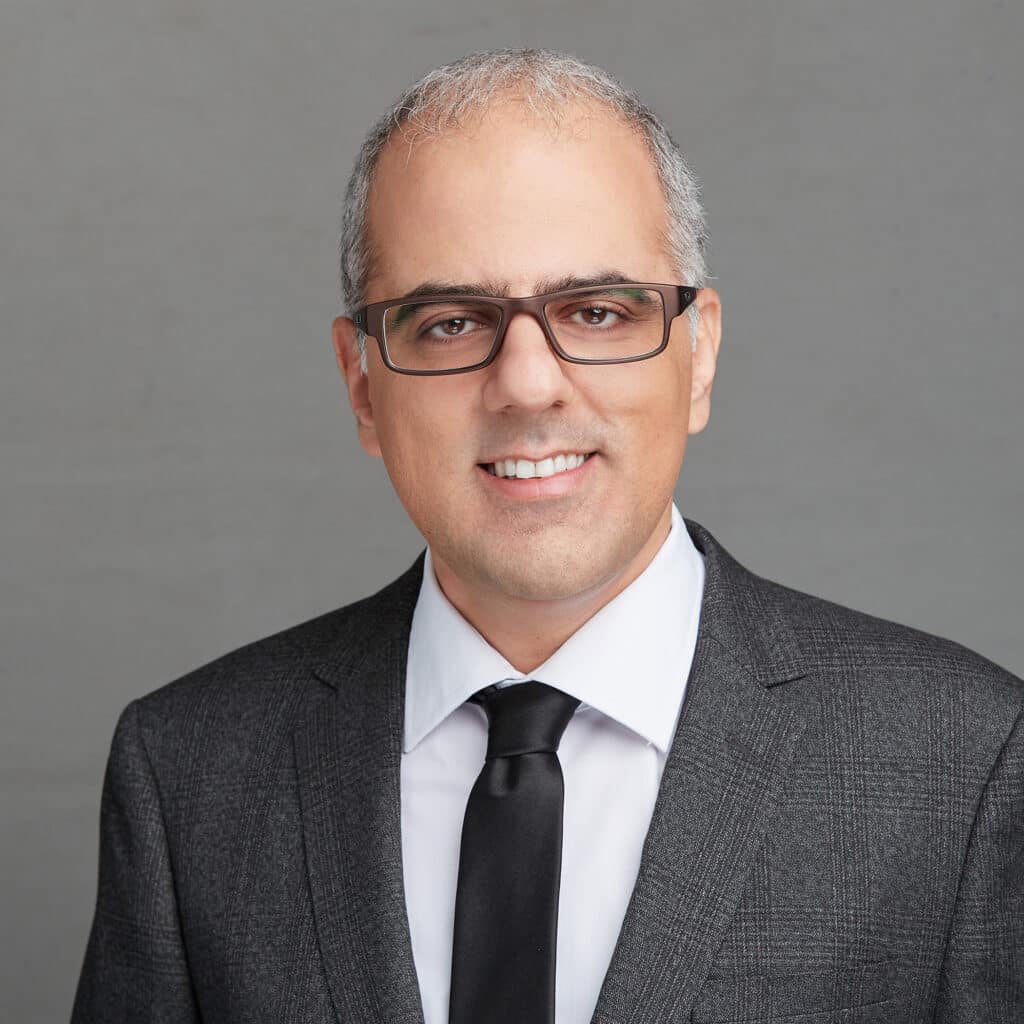
Amir Hadadzadeh
Assistant Professor, University of Memphis
Keynote Presentation: Additive Manufacturing of Titanium Alloys: Processing-Structure-Properties Relationship
Metal additive manufacturing (AM) is a favorable process from a metallurgical perspective due to its capability of tailoring ultrafine, metastable, and hierarchical microstructures. In the case of near-α and dual-phase α+β titanium alloys, the hierarchical features include prior beta grain boundaries, martensitic lath structure (α’ martensite), nanotwins, and dislocation networks. In this study, the microstructure of two titanium alloys, Ti-6Al-4V and Ti-6Al-2Sn-4Zr-2Mo, is investigated using multi-scale microscopy techniques. The components were fabricated using laser-powder bed fusion. α to β phase transformation kinetics were studied using differential scanning calorimetry. The kinetics results were then employed to design proper heat treatments to achieve desired strength-ductility synergy. The mechanical properties were then correlated to the microstructure to elaborate on the processing-microstructure-property relationship. This study provides insight into a new approach in the heat treatment of AM components to achieve the desired strength-ductility synergy by considering the role of microstructure in the physical properties.
Biography
Dr. Amir Hadadzadeh is currently an Assistant Professor at the Department of Mechanical Engineering, University of Memphis, TN, USA. He received his PhD in Mechanical Engineering from the University of Waterloo, Canada. He served as a postdoctoral fellow at the Marine Additive Manufacturing Center of Excellence, Canada, and a visiting researcher at CanmetMATERIALS, Canada between 2017 to 2019. Dr. Hadadzadeh is an author and co-author of more than 60 peer-reviewed journal papers. His main research interest is the materials science paradigm; processing-microstructure-properties relationship in metals and alloys, with an emphasis on additive manufacturing (AM). Dr. Hadadzadeh employs multi-scale microstructural characterization techniques to study the microstructure of AM metals and alloys at different length scales. The microstructural features are then correlated to the physical and mechanical properties. This research elaborates on the governing mechanisms in controlling the material properties, from nanoscale to sub-millimeter-scale. As such, a holistic understanding of the processing-microstructure-properties relationship in AM metals and alloys is developed. Dr. Hadadzadeh’s research has applications in different fields including biomedical, aerospace, automotive, energy, etc.

Ali Nasiri
Canada Research Chair, Assistant Professor, Dalhousie University
Keynote Presentation: On the Formation Mechanisms of Onion Rings Structure in Friction Stir Processed AlSi10Mg Alloy Fabricated through Laser Powder Bed Fusion
Friction Stir Processing (FSP) is recognized as a solid-state surface modification technique, particularly effective in inducing grain refinement, promoting microstructural homogeneity, and eliminating internal defects and discontinuities such as porosities, cracks, and lack of fusions. These improvements lead to enhanced surface properties of the processed alloys. Consequently, FSP holds promise for modifying components produced through various additive manufacturing modalities that are susceptible to the mentioned defects. The objective of this study is to investigate the microstructural evolution in a friction stir-processed laser powder bed-fused AlSi10Mg alloy. Special attention is devoted to comprehending the mechanisms responsible for the formation of the onion rings structure in the stir zone of the FSP-treated alloy. Employing a range of multi-scale characterization techniques, including confocal laser scanning microscopy (CLSM), scanning electron microscopy (SEM), electron backscattered diffraction (EBSD), and transmission electron microscopy (TEM), this research aims to identify variations in Si precipitates volume fraction and morphology, compositional uniformity, grain size and texture variations, and the formation of submicron-nano features within the alternating bands of onion rings, shedding light on their formation origin.
Biography
Dr. Nasiri is an Assistant Professor and a Canada Research Chair (CRC)-Tier 2 at Dalhousie. He is also affiliated with the mechanical engineering department at the Memorial University of Newfoundland through an Adjunct Professor appointment. His research contributions lie in advancing state-of-the-art metal additive manufacturing (AM) processes toward large-scale parts production with tailored properties at drastically reduced production time and cost. Dr. Nasiri’s research is also recognized for contributions to microstructure-properties-performance relationships in additively manufactured advanced metallic materials, i.e., high strength corrosion resistant alloys and nanoparticles reinforced high strength aluminum alloys, as well as post-printing process developments for AM fabricated parts to improve mechanical integrity and service life.

Xingxing Zhang
Institute of High Energy Physics, Chinese Academy of Sciences
Keynote Presentation: Micromechanical behavior of additively manufactured Al alloys: in-situ experiment and crystal plasticity modeling
Aluminum alloys prepared by laser powder bed fusion (LPBF) exhibit a multiscale heterogeneous microstructure and excellent mechanical properties. However, the reported mechanical properties of LPBF aluminum alloys exhibit significant variability, posing challenges for industrial applications. A more thorough comprehension of microscale deformation mechanisms is essential for future control and optimization of mechanical properties. In this study, in-situ deformation experiments were conducted using high-energy synchrotron X-ray diffraction and neutron diffraction to examine the evolution characteristics of lattice strain, corresponding stress, and dislocation density of LPBF aluminum alloys during loading. The investigated alloys included different AlSiMg alloys and an AlMgScZr alloy. The study also investigated the damage behavior of precipitate phases and the fracture mechanism of the alloy during deformation. Furthermore, crystal plasticity models for LPBF aluminum alloys were established using three-dimensional representative volume elements and the fast Fourier transform method. The model systematically analyzed the influence of microstructure on macroscopic and microscopic mechanical properties, and the model parameters were calibrated using in-situ diffraction experimental results. This series of studies explored the microscale mechanical behavior of LPBF aluminum alloys, laying the groundwork for enhancing the mechanical performance of LPBF aluminum alloys in the future.
Biography
Bio coming soon.
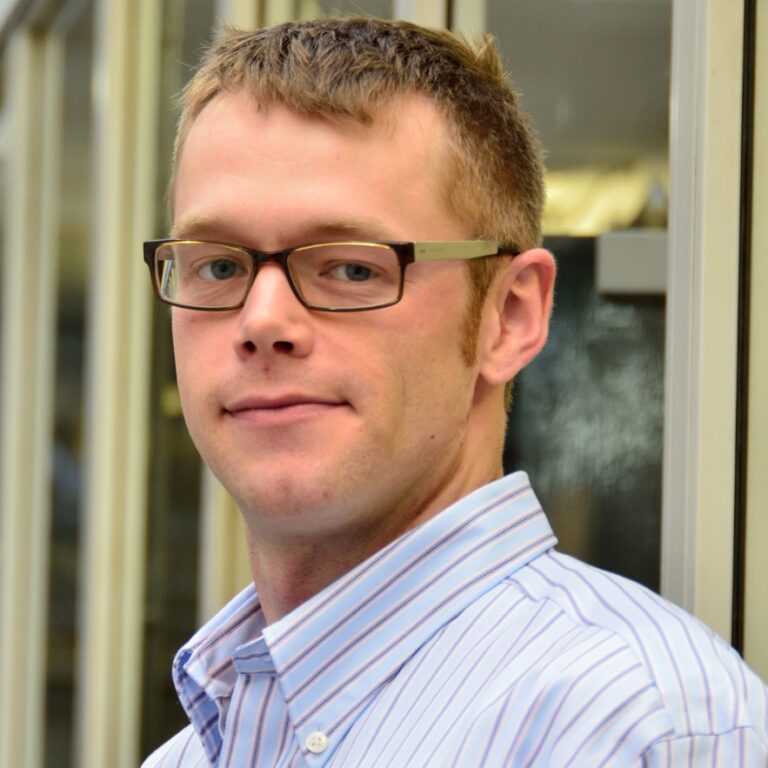
Matt Roy
University of Manchester
Keynote Presentation: Challenges in Assessing Residual Stress in Additively Manufactured Components
The premise of additively manufactured components is improved material utilisation and the fabrication of unique features which cannot be fabricated in any other fashion. This is particularly the case for high-value light metal systems employed in the transportation sector, or in tooling systems for the high volume manufacturing sectors. However, these benefits also challenge the quantification of their performance when it comes to accommodating for residual stresses. Showcasing powder and wire-based additive processes, the challenges inherent to capturing the residual stress state in additive manufacturing will be presented in the context of the length scales of residual stress equilibration. Focussing on the more developed laser powder bed fusion (L-PBF) sector, efforts to generate benchmark components by industry stakeholders will be presented, namely NIST’s AM-Bench as well as the more recent European effort with EASI-STRESS (www.easi-stress.eu). A case study stemming from quantifying stresses in a DED-Arc Ti6Al4V component will also be presented. The main approaches to quantifying residual stress in these types of components at engineering length scales will be discussed, including diffraction techniques such as high energy synchrotron X-ray and neutron diffraction as well as the contour method. Opportunities to address shortcomings in process simulations in commercial computer aided engineering will be described from the context of process model verification with residual stress.
Biography
Dr. Matthew Roy attained degrees in Integrated Engineering and Mechanical and Materials Engineering from Western University, followed by a PhD in Materials Engineering from the University of British Columbia. He is a Senior Lecturer at the University of Manchester and affiliated with the Henry Royce Institute, a national UK organization for advanced materials and innovation. Here he leads the Additive Manufacturing and Performance group, examining the links between thermomechanical process methodologies in metallic components to their in-service lives. His main research interests target residual stress development and mitigation requirements, structure-property relationships and structure-function relationships induced by incremental solidification processes.
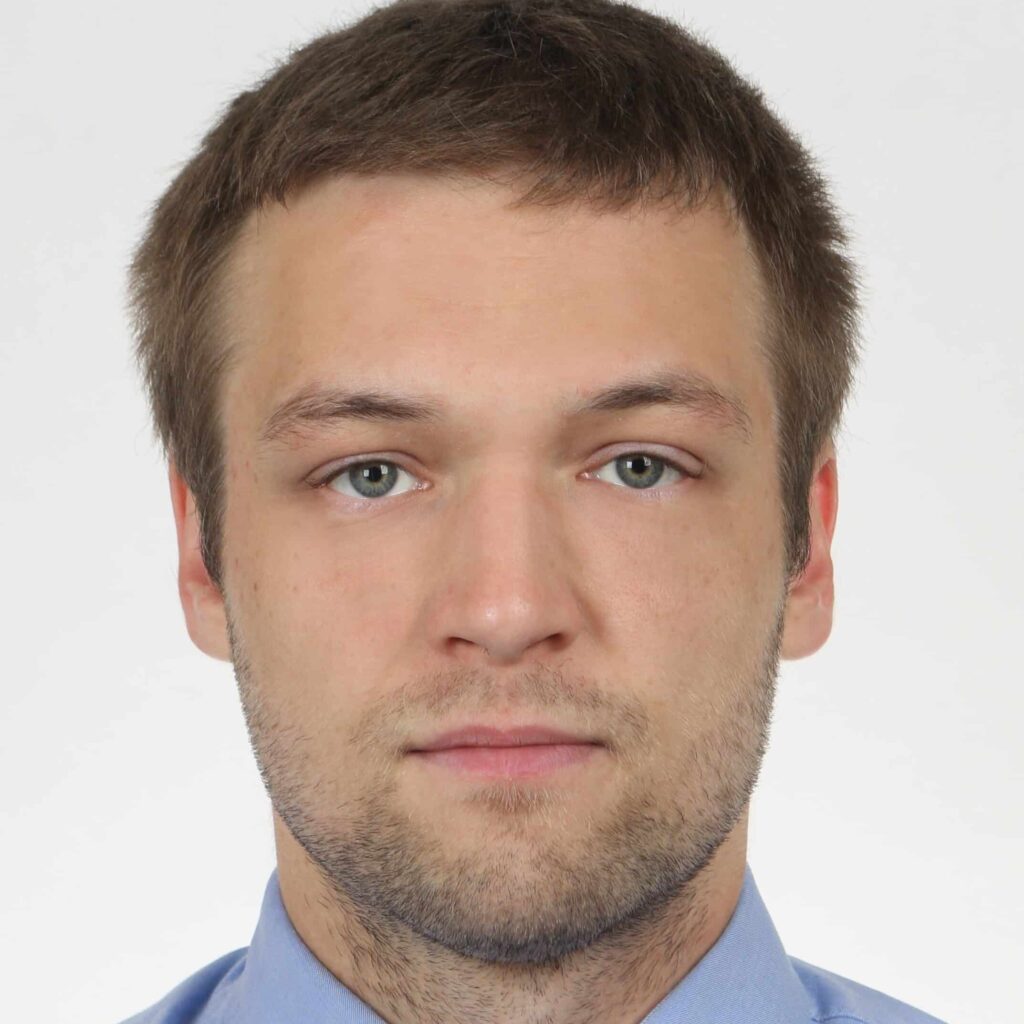
Witold Chrominski
University of Manchester
Keynote Presentation: Microalloying aluminium alloys with silver - effect on precipitation strengthening
Precipitation strengthening of aluminium alloys is a well-established process which enable to enhance strength of material via relatively simple thermal treatment. Those procedures enable nucleation and growth of subsequent phases which provide distortions in the aluminium lattice and result in improving mechanical properties. Since nucleation and growth of precipitates ares diffusion controlled occurrences, they can be controlled by adjusting vacancies mobility. One of effective techniques is microalloying – adding very small amount of additional elements to the master alloy. Silver seems to be very interesting addition as its binding energy to other alloying elements (Mg, Si, Cu) as well as vacancies is relatively small. Thus, it creates opportunity to tailor precipitation effectively via heat treatment. Moreover, pre-precipitates clusters are stable at room temperature which allows to obtain strength typical for this alloys series after unavoidable periods of storage between subsequent heat treatment steps. This study reveals precipitation in modified AlMgSi alloys and its potential in various heat treatment procedures. DSC and atomic resolution STEM allowed to explore how Ag addition affect well known precipitation sequence in AlMgSi alloys. Differences in precipitation sequence between master and modified alloy as well as thermal history dependence are explored with STEM and explained revealing atomic scale occurrences.
Biography
Dr. Witold Chrominski is assistant professor at Warsaw University of Technology Faculty of Materials Science and Engineering. He is involved in operation of Electron Microscopy Laboratory where he is one of the main operators of multiple SEMs and TEMs. He specializes in imaging and analysis of crystalline defects and phase transitions via conventional TEM imaging as well as probe corrected high resolution STEM. He deals with all kinds of materials including semiconductors, ceramics and metals. Research field developed by him focuses on complex strengthening mechanisms mostly in aluminium alloys. This requires fabricating complicated microstructures by combination of plastic deformation and heat treatment procedures, which needs in-depth analysis combining a variety of techniques. What fascinates dr. Chrominski the most is finding the relations between evaluation of bulk material properties and detailed microscopic investigations. Currently he focuses on early precipitation effects in microalloyed AlMgSi and AlCuMg alloys, which enable use of state-of-the-art microscopy for evaluation of phase transitions at atomic scale. Dr. Chrominski is author/co-author of more than 60 papers in renowned scientific journals.
WALSIM X: Water, Air, Land Sustainability Issues in Mining and Metal Extraction

Krishna Parameswaran
President, KP Strategic Consulting, LLC
Keynote Presentation: Sustainable Development and the Primary Copper Industry-- The Coming Decades
This presentation discusses how metal mining can be compatible with sustainable development and how sustainability considerations have been applied in the primary copper industry, using a case study of sustainable mining practices from past and current ASARCO LLC operations. It then then discusses how such considerations might be applied in the future, by examining the emerging trends and drivers that will influence the mining industry in the coming decades. The trends include: (1) declining ore grades; (2) staffing of mines with the baby boom generation retiring; and (3) transitioning to a low carbon economy and (4) re-gaining stakeholder trust and license to operate.
In looking at the future, an important environmental concern that has risen to the forefront is the safe management of tailings dams, spurred by the Jagersfontein dam collapse on September 22, 2022 and the Brumadinho dam collapse in Brazil in January 29, 2019. These incidents in the wake of continuing catastrophic tailings dam failures across the globe, has resulted in increased scrutiny from stakeholders who, in turn demanded independent global standards for tailings dam management culminating in the adoption of global tailing standards (Global Tailings Review, 2020).
Biography
Krishna Parameswaran received a Bachelor of Technology degree in metallurgical engineering from the Indian Institute of Technology, Bombay, India in 1968, a Master of Science degree in metallurgical engineering from the University of Missouri-Rolla in 1971 and a Doctor of Philosophy in metallurgy from Pennsylvania State University in 1974. He is a licensed professional engineer in Pennsylvania since 1989.
Dr. Parameswaran is currently President of KP Strategic Consulting, LLC (dba tfgMM Strategic Consulting) in Irving, Texas focusing on environmental compliance, permitting and sustainable development in the extractive industries, especially metal mining. Krishna retired from ASARCO LLC (Asarco) after 34 years of service on March 31, 2015. He joined Asarco, an integrated primary copper producer, as a Senior Research Engineer in 1981 at Asarco’s Central Research Laboratories in South Plainfield, New Jersey. Prior to joining Asarco, he was employed as Professional Staff with Arthur D. Little Inc. in Cambridge , Massachusetts.
His most recent position at Asarco LLC was Director of Environmental Services and Compliance Assurance in Asarco’s Environmental Affairs Department in Tucson, Arizona. His responsibilities included oversight of environmental permitting and compliance activities at Asarco’s operating facilities; coordination of environmental activities among the facilities; providing technical support to environmental programs within the operations; developing environmental policy, goals and objectives for the company and operations and ensuring internal consistency within Asarco on environmental issues. In addition, he coordinated the company’s Sustainable Development activities and managed its Environmental Management System (EMS) and compliance auditing programs. The most significant achievement was coordinating implementation of the Avalon Solar Project, a 57-MW photovoltaic solar plant at Asarco’s Mission mine in Sahuarita, Arizona. He has edited, authored/coauthored chapters in four books dealing with sustainability development considerations in mining, innovative mineral and metallurgical process development and

Jan Kwak
Managing Director, Hatch, Australia and Asia
Keynote Presentation: Tilting the table towards zero waste mining
Society continues to require metals and materials as it transitions to a new, more sustainable economy. The imperative for the mining industry is to provide these materials, but it can’t do it the way it has been done in the past. The increasing environmental stress on natural air, land and water systems due to growing demand for metals is not sustainable without rethinking the approach to mineral extraction, processing, recycling and waste. Key change drivers for the process industries include the energy transition, the circular economy, the need for value creation and political will. This transformation requires innovation at all levels from technology, to business strategy to market structure and policy. This keynote provides strategic insight on how mining can create new value for society financially, environmentally, and socially. Re-examining process fundamentals, process intensities, the hierarchy of controls, and market structure under the lens of the new economy opens up new possibilities for value creation. Examples from commodities including Nickel, Lithium, Copper, Steel and Aluminum are given.
Biography
Over his 30 years with Hatch, Jan has developed an in-depth, hands-on understanding of the relationships between business strategy and project development. Jan has managed every aspect of the design, construction, commissioning and operation of large mines and metallurgical facilities, from the study phase through detailed design to commissioning and operations. He is skilled at guiding project teams in delivering the desired project benefits to clients, including his expertise in the development and implementation of new technology projects from pilot plant studies through all engineering phases, construction, commissioning and plant operations.
As Managing Director of Hatch in Australia-Asia, Jan oversees an estimated 1500 staff on more than 200 projects. He is also chair of Australia’s Green Hydrogen Consortium, which seeks to investigate mining sector decarbonisation, and is a director of EnviroMets, a Queensland government initiative to find new value for post mining land.
Historical Metallurgy Luncheon featuring the Fathi Habashi Lecturer

Lachlan MacKinnon
Professor, Cape Breton University
Keynote Presentation: ‘The Province of Industry’: Coal, Steel, and Industrial Development in 19th Century Nova Scotia
Industrial history in Nova Scotia extends back to the early 18th century, when the first commercial mine in North America opened at Port Morien to help supply the French fortifications at Louisbourg. Indeed, the availability of coal and its possible extraction were also noted by early British cartographers and surveyors like J.F.W. Desbarres. Despite this early history, the true development of the provincial mining industry did not occur until the 19th century, when the British crown assigned a coal lease to the General Mining Association monopoly in 1826. This announcement spurred a flurry of development across the province, as new mines were capitalized, and shafts were sunk from Cape Breton to Cumberland County.
In this presentation, the 19th century of industrialization in the province of Nova Scotia is examined with particular attention to the development of the coal, iron, and steel industries. Tracing this lineage from the formation of the G.M.A. to the breakup of the monopoly during the free enterprise period and the consolidation of large international firms like the Dominion Coal Company, Nova Scotia’s industrial history provides insight into the shape of provincial economy at the turn of the 20th century. A macro-analysis of these historical changes will be provided along with attention to now Nova Scotian workers experienced and responded to industrialization and urbanization as the modern province took shape.
Biography
Dr. Lachlan MacKinnon is an Associate Professor of History and the Canada Research Chair (Tier II) in Post-industrial Communities at Cape Breton University. His research focuses on regional development in Atlantic Canada, industrial history, and deindustrialization in the Nova Scotia steel and coal industries. His recent book, Closing Sysco, provides an in-depth analysis of the failure of the steel industry in Sydney, Nova Scotia, drawing upon oral testimony from former workers, management, and politicians. Currently, MacKinnon is a co-investigator of the international Deindustrialization and the Politics of Our Time research partnership, which brings together 18 universities in the collaborative study of industrial history.
